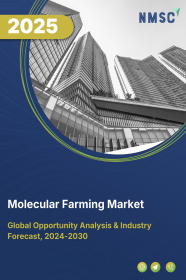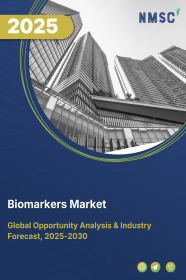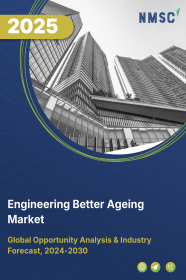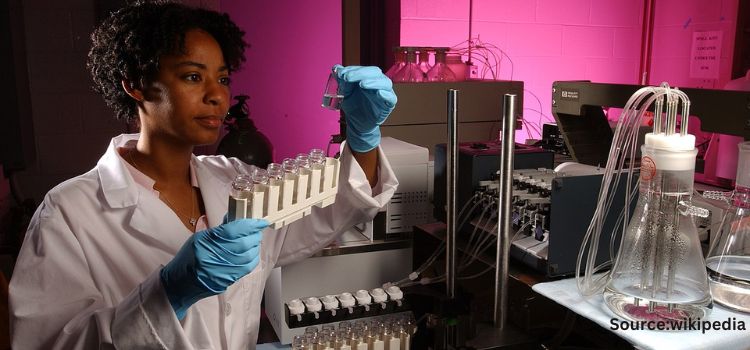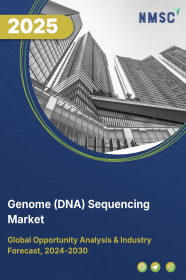
Genome (DNA) Sequencing Market by Product Type (Consumable, Instrument, and Service), by Type (Whole Genome Sequencing, Exome Sequencing, and Targeted Sequencing), by Technology (Sequencing by Synthesis, Ion Semiconductor Sequencing, Sequencing by Ligation, Pyrosequencing, Single Molecule Real-time Sequencing, Chain Termination Sequencing, and Nanopore Sequencing) – Global Opportunity Analysis and Industry Forecast 2023-2030
US Tariff Impact on Genome (DNA) Sequencing Market
Trump Tariffs Are Reshaping Global Business
Market Definition
The global Genome (DNA) Sequencing Market size was valued at USD 10.49 billion in 2022 and is predicted to reach USD 42.28 billion by 2030 with a CAGR of 22% from 2023-2030. Genome (DNA) sequencing refers to a technology that enables the sequencing of multiple DNA strands through massive parallelism. It is the process of analyzing the sample of DNA that is taken from blood and extracts DNA & prepares for sequencing. This technology sequences the entire genome of an organism to help identify the order or sequence of DNA nucleotides or bases encoded by letters such as adenine (A), cytosine (C), guanine (G), and thymine (T) among others.
The study of DNA sequencing is widely used in areas, such as biomarker discovery, oncology studies, personalized medicine, forensics, and others. Genome sequencing also provides information about drug efficacy or adverse effects of drug. This technology offers low cost, high accuracy & speed and accurate results even with small sample inputs.
Market Dynamics and Trends
The rising prevalence of genetic diseases such as cancer, alzheimer's, and cystic fibrosis amplified the requirement for genome sequencing, enabling the identification of genetic mutations driving these conditions and facilitating the development of personalized treatments, thereby propelling the growth of the genome sequencing market.
Moreover, the increasing R&D activities aimed at developing treatments for genetic disorders & chronic ailments, such as beta-thalassemia, sickle cell anemia, and diabetes are further expected to fuel the growth of genome (DNA) sequencing market during the forecast period.
For instance, in January 2023, Department of Biotechnology (DBT) announced R&D project proposals focused on human genetic diseases, encouraging scientific endeavors to better understand and address these conditions. This initiative seeks to advance research in the field of human genetics and potentially contribute to improved diagnostics and treatments for genetic disorders.
Furthermore, advancements in sequencing techniques such as next-generation sequencing (NGS) and whole-genome sequencing (WGS) that enables the sequencing of a large number of DNA samples in a short period of time, at a lower cost, and with high accuracy is further boosting the growth of the market.
For instance, in March 2023, Illumina and GenoScreen introduced an NGS-based test aimed at eradicating tuberculosis (TB) in India, as part of their collaborative efforts to combat the disease and enhance detection and management of multidrug-resistant TB. This partnership aims to address India's high TB burden by utilizing next-generation sequencing technology for more effective detection and control of TB.
However, the lack of skilled professionals to operate and maintain sequencing equipment as well as analyze sequencing data is the factor restraining the growth of the market during the forecast period. In addition, the high cost of genome sequencing as well as the complexity of genomes in accurately distinguishing disease-causing variants is the major factor restraining the growth of the genome sequencing market.
On the contrary, the integration of artificial intelligence and machine learning in genomics is driving more efficient analysis of data, allowing researchers to predict gene mutations in patient DNA, which is expected to expected to create significant growth opportunities for the genome sequencing market in the near future.
For instance, in June 2023, International Pharmaceutical Association (IPA) launched a In Silico Humanization Platform powered by HYFT, with the aim of revolutionizing the transgenic animal model market. This innovative platform seeks to transform drug development by enabling more accurate predictions of human responses to new treatments, potentially reducing the reliance on traditional animal testing methods.
Market Segmentations and Scope of the Study
The genome (DNA) sequencing market share is segmented on the basis of product type, type, technology, application, end user, and region. On the basis of product type, the market is divided into consumable, instrument, and service. On the basis of type, the market is classified into whole genome sequencing, exome sequencing, and targeted sequencing. On the basis of technology, the market is bifurcated into sequencing by synthesis, ion semiconductor sequencing, sequencing by ligation, pyrosequencing, single molecule real-time sequencing, chain termination sequencing, and nanopore sequencing.
On the basis of application, the market is further segmented into biomarkers and cancer, research, diagnostics, reproductive health, personalized medicine, forensics, agriculture & animal research and others. On the basis of end user, the market is further divided into academic & government research institutes, pharmaceutical companies, biotechnology companies, hospitals & clinics and others. Regional breakdown and analysis of each of the aforesaid segments includes regions comprising of North America, Europe, Asia-Pacific, and RoW.
Geographical Analysis
North America has the largest share of the genome sequencing industry and is expected to remain the leading market in the future. This is attributed to the increasing government investments in R&D activities focused on genome editing technologies in countries, such as the U.S. and Canada. For instance, in March 2022, the National Institutes of Health (NIH) awarded USD 89 million for additional projects in the Somatic Cell Genome Editing (SCGE) Program to advance genome editing across the U.S. and Canada. This program was created by NIH to improve genome-editing technologies and make genome-editing therapies widely available.
Also, major key players such as Illumina Inc., Thermo Fischer Scientific Inc, PerkinElmer Inc, and Hamilton Company are adopting innovation and product launches that boost the market growth in this region. For instance, in October 2022, Illumina launched the NovaSeq X Series, which is the new production-scale sequencer that enables faster, more powerful, and more sustainable sequencing. This new technology generates more than 20,000 whole genomes per year, accelerating genomic discovery and clinical insights, to understand diseases & transform patient lives.
On the other hand, Asia-Pacific is expected to show a steady rise in the genome (DNA) sequencing market due to the increasing prevalence of chronic diseases such as cancer & HIV, which can be treated with the help of genome editing technology. According to the government's HIV Estimation 2021 report, the number of People Living with HIV (PLHIV) in India is 2.4 million.
Moreover, rising government initiatives to create awareness of gene editing technology are expected to drive the genome (DNA) sequencing market growth in this region. For instance, in June 2021, Asia-Pacific Association of Agricultural Research Institutions (APAARI) and Biotech Consortium India Limited (BCIL) organized a webinar series on “Applications of Gene Editing in Sustainable Agriculture and Food Security in Asia-Pacific Region”. The applications of gene-editing have advanced agricultural sustainability & nutrition security and encouraged innovations in gene editing.
Competitive Landscape
The genome (DNA) sequencing market trends comprises of various market players such as Illumina Inc., Thermo Fischer Scientific Inc., Oxford Nanopore Technologies Plc, Agilent Technologies, Inc., PerkinElmer Inc., QIAGEN, Eurofins Scientific, F. Hoffmann-La Roche Ltd, Takara Bio Inc., Hamilton Company, and others.
These market players are adopting various strategies such as product launches and business expansion to maintain their dominance in the genome (DNA) sequencing market. For instance, in May 2022, PerkinElmer announced expansion of ultrarapid whole genome sequencing (urWGS) through PerkinElmer Genomics. This addition to the company’s portfolio of whole genome sequencing (WGS) provides physicians with comprehensive, meaningful results in five days to help inform clinical management and improve outcomes for critically ill patients in neonatal and pediatric intensive care units (NICUs and PICUs).
Moreover, in December 2021, Roche launched the AVENIO edge system, which automates and simplifies the next-generation sequencing sample preparation process, reduce the risk of human error, and advances precision medicine by providing high quality results. This system provides an end-to-end solution for DNA sample processing, from input to sequencing-ready libraries, facilitating precision medicine testing in the future.
Key Benefits
-
The report provides quantitative analysis and estimations of the genome (DNA) sequencing market from 2023 to 2030, which assists in identifying the prevailing market opportunities.
-
The study comprises a deep-dive analysis of the genome (DNA) sequencing market including the current and future trends to depict prevalent investment pockets in the market.
-
Information related to key drivers, restraints, and opportunities and their impact on the genome (DNA) sequencing market is provided in the report.
-
Competitive analysis of the players, along with their market share is provided in the report.
-
SWOT analysis and the Porter's Five Forces model is elaborated in the study.
-
Value chain analysis in the market study provides a clear picture of roles of stakeholders.
Genome (DNA) Sequencing Market Key Segments
By Product Type
-
Consumable
-
Instrument
-
Service
By Type
-
Whole Genome Sequencing
-
Exome Sequencing
-
Targeted Sequencing
By Technology
-
Sequencing by Synthesis
-
Ion Semiconductor Sequencing
-
Sequencing by Ligation
-
Pyrosequencing
-
Single Molecule Real-time Sequencing
-
Chain Termination Sequencing
-
Nanopore Sequencing
By Application
-
Biomarkers and Cancer
-
Research
-
Diagnostics
-
Reproductive Health
-
Personalized Medicine
-
Forensics
-
Agriculture & Animal Research
-
Others
By End User
-
Academic & Government Research Institutes
-
Pharmaceutical Companies
-
Biotechnology Companies
-
Hospitals & Clinics
-
Others
By Region
-
North America
-
The U.S.
-
Canada
-
Mexico
-
-
Europe
-
The UK
-
Germany
-
France
-
Italy
-
Spain
-
Denmark
-
Netherlands
-
Finland
-
Sweden
-
Norway
-
Russia
-
Rest of Europe
-
-
Asia-Pacific
-
China
-
Japan
-
India
-
South Korea
-
Australia
-
Indonesia
-
Singapore
-
Taiwan
-
Thailand
-
Rest of Asia-Pacific
-
-
RoW
-
Latin America
-
Middle East
-
Africa
-
Key Players
-
Illumina Inc.
-
Thermo Fischer Scientific Inc.
-
Oxford Nanopore Technologies plc
-
Agilent Technologies, Inc.
-
PerkinElmer Inc.
-
QIAGEN
-
Eurofins Scientific
-
F. Hoffmann-La Roche Ltd
-
Takara Bio Inc.
-
Hamilton Company
REPORT SCOPE AND SEGMENTATION:
|
Parameters |
Details |
|
Market Size in 2022 |
USD 10.49 Billion |
|
Revenue Forecast in 2030 |
USD 42.28 Billion |
|
Growth Rate |
CAGR of 22% from 2023 to 2030 |
|
Analysis Period |
2022–2030 |
|
Base Year Considered |
2022 |
|
Forecast Period |
2023–2030 |
|
Market Size Estimation |
Billion (USD) |
|
Growth Factors |
Rising prevalence of genetic diseases such as cancer, alzheimer's, and cystic fibrosis across the globe Increasing R&D activities for genetic disorders & chronic ailments treatments Advancements in sequencing techniques such as next-generation sequencing (NGS) and whole-genome sequencing (WGS) |
|
Countries Covered |
28 |
|
Companies Profiled |
10 |
|
Market Share |
Available for 10 companies |
|
Customization Scope |
Free customization (equivalent up to 80 working hours of analysts) after purchase. Addition or alteration to country, regional, and segment scope. |
|
Pricing and Purchase Options |
Avail customized purchase options to meet your exact research needs. |

















 Speak to Our Analyst
Speak to Our Analyst



